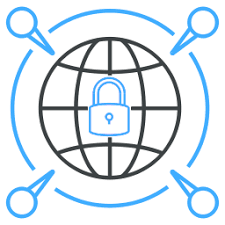 Beginning this month, businesses around the country are required to answer requests from Californians about personal data companies collect about them. A big change in data privacy protection is ramping up in California, and many businesses will soon feel its effects. Beginning this month, large businesses around the country that operate in California must disclose to their Golden State customers who ask for it any data the companies collect about them. Those customers can then request that the information be deleted or demand that it not be sold. Companies that fail to comply could face significant fees and penalties. The law, called the “California Consumer Privacy Act,” is the first sweeping data privacy measure in the country. It is intended to give consumers more control over their personal data at a time when breaches are rampant and personal information is mined, sold and used in ways consumers have little say over. The logistical challenges, independent of the legal challenges, are a significant undertaking for businesses who have to comply with the act. The law applies to for-profit companies that operate in California and meet one of three criteria: They have a gross annual revenue of at least $25 million; they buy, sell or share personal information for at least 50,000 California consumers; or they make at least half of their annual revenue by selling consumer data.  The companies that the law covers are mostly large private and public companies with significant reach. A report by California’s attorney general estimated that compliance will cost businesses roughly $55 billion initially, and the U.S. Department of Justice expects between 15,000 and 400,000 businesses to be affected nationwide. Fines for failing to comply range from $2,500 to $7,500 per violation. California’s law provides a broad umbrella for what constitutes personal information, going beyond the typical name and driver’s license number to include information such as internet browser history, geolocation data and audio. “All those kinds of information can be associated with a person and contain intensely private information,” said Jacob Snow, an attorney for the American Civil Liberties Union of Northern California who focuses on technology. One of the most significant aspects of the California law is a clause that gives the state’s consumers the right to sue over a data breach that meets certain criteria. If they are successful, companies who expose consumer data could be forced to pay between $100 and $750 per Californian affected by a breach and any other fees the court deems appropriate. California’s approach is starkly different from Florida’s. Like most states, Florida has few laws regulating data privacy. None allow consumers to fully understand where their data lives and to take it back as California’s does, though the Sunshine State does have a law requiring businesses to notify consumers after a data breach of a certain size. “Outside of that, there isn’t anything that really requires (companies) to take reasonable measures to protect personally identifiable information,” said Sri Sridharan, director of Cyber Florida, the cybersecurity center housed at the University of South Florida. A bill proposed recently by Sen. Doug Broxson, R-Gulf Breeze, would get Florida slightly closer to California’s law by requiring websites to tell Florida consumers what personal information it collects and let them opt out of the sale of their data. The regulation is widely considered to be the first in what will likely be a tide of similar state laws and potential federal legislation. That means companies will need to figure out how to comply with multiple laws and still do business effectively. You could end up with a federal floor and then still have different states that set different levels of privacy protections for consumers, even if those privacy levels conflict Some companies are expected to take a segmented approach for now, where they would have one division for California and one for the rest of the country, as many do to comply with Europe’s significantly more stringent data privacy laws. Others, such as Microsoft, are complying with California’s law and offering the same protections to customers around the country.
0 Comments
 Not all Snapchat users are happy about the bold, new version of the ghost, but there is a very good why Snap made the change - and it might hint at the future of tech branding. Snapchat’s cute ghost logo is now surrounded by a decisively bold line that may feel too thick for comfort, at least at first glance. In fact, many users aren’t happy about the change and took to Twitter in numbers to express their feelings. An instant reaction and exposure to the discussion, and the App, reason number one? Snap says the bold line makes the app’s logo more visible and eye-catching. This is indeed true and because it’s so different from the thin lines that customary modern-day branding uses, it works. Still, some users are threatening to delete the app over it, or at least hide it away in a folder so they don’t have to look at it. One user described how it didn’t “match” the other apps on their phone. Thinness has become a design standard—largely thanks to Apple and its obsession with clean, thin minimalism. Across the internet, lighter line weights have become associated with the tech companies, as well as clean, clear, user-centered design—chunky lines look like Comic Sans compared to this sleek aesthetic. If you scroll through your phone and look at app icons, you’d be hard-pressed to find many apps that embrace the kind of thick line that Snap now has with its new logo.  But that’s also exactly what helps Snap—and the few other companies daring to move beyond the minimalist logo paradigm—stand out. The subtle shift makes sense within the context of the company’s latest release, Spectacles 3, which isn’t about pleasing the masses but is marketed instead to the creative, fashion-forward, early adopters of the world. Amid the clean lines and minimalism, Snap is bold and not afraid to show it. Source: Katharine Schwab, Fast Company.
The estimated eCommerce revenue in US Dollars of the top 5 countries in 2018 were:
1. 584 billion for China, (110 billion higher than the United States) 2. 474 billion for the US 3. 105 billion for Japan 4. 103 billion for UK 5. 70 billion for Germany As expected, electronics dominate the market, followed by miscellaneous (including office supplies, gifts, novelty and souvenirs) and clothing. Categories such as food and beverages have a very small share of online sales. But all of these markets will evolve in the coming years. (Source: Statista, Roland Berger) |
BLOGArchives
January 2025
Categories
All
|